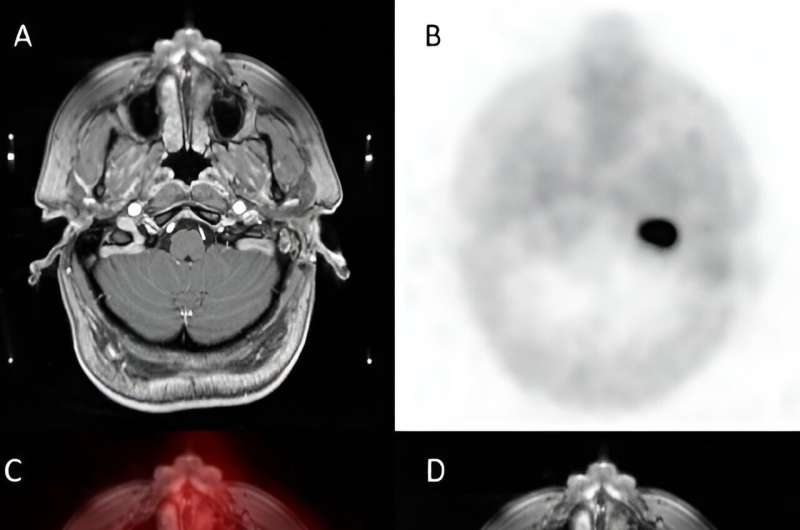This article has been reviewed according to Science X's editorial process and policies. Editors have highlighted the following attributes while ensuring the content's credibility:
fact-checked
peer-reviewed publication
proofread
PET/CT provides superior lesion detection for head and neck paragangliomas compared to gold standard MRI

A novel imaging approach—68Ga-DOTATATE PET/CT—can more accurately differentiate residual/recurrent tumors from post-surgery scar tissue in patients with head and neck paragangliomas (HNPGLs) compared to MRI. Providing functional information about the tumors, 68Ga-DOTATATE PET/CT has the potential to play a vital role in improving preoperative and postoperative treatment planning strategies for HNPGL patients.
This research was presented at the 2024 Society of Nuclear Medicine and Molecular Imaging Annual Meeting.
HNPGLs are rare neuroendocrine tumors that pose diagnostic and therapeutic challenges due to their complex anatomical locations. The role of imaging modalities is crucial in the management of these tumors. While MRI is the gold standard for preoperative evaluation and postoperative surveillance, its ability to differentiate residual tumor from postoperative changes, such as scar tissue, is limited.
"We know that HNPGLs typically express somatostatin receptors (SSTRs) on the surface of neuroendocrine cells," said Patrick Wojtylak, MSHA, CNMT, Radiology System Manager for Nuclear Medicine at University Hospital Cleveland Medical Center in Cleveland, Ohio. "Since 68Ga-DOTATATE has a high sensitivity and specificity for SSTR, we sought to determine whether 68Ga-DOTATATE PET/CT could detect HNPGLs more accurately than MRI, specifically post-surgery."
The study included 25 patients with preoperative clinical suspicion of HNPGLs (five patients) or postoperative pathology-proven HNPGLs (20 patients). Patients underwent 68Ga-DOTATATE PET/CT and MRI scans. All studies were then reviewed by a specialized nuclear medicine physician experienced in 68Ga-DOTATATE PET/CT interpretation.
Compared to contrast-enhanced MRI alone, 68Ga-DOTATATE PET/CT offered superior lesion detection and more accurate delineation of tumor extent in patients with HNPGLs. It also provided improved differentiation between recurrent or residual tumor and scar tissue post-surgery, exhibiting heightened sensitivity and specificity compared to MRI alone.
"68Ga-DOTATATE PET/CT holds promise as a reliable imaging biomarker for HNPGLs, offering enhanced sensitivity and specificity compared to conventional imaging modalities," noted Wojtylak. "Integrating 68Ga-DOTATATE PET/CT into the clinical management of HNPGLs can lead to more accurate diagnosis, better treatment planning, and improved patient outcomes."
More information: Abstract 24126: Wojtylak et al, Utilization of Gallium-68 Dotatate PET CT for the Evaluation of Head and Neck Paraganliomas in a Major Tertiary Academic University Neurosurgical Center, Journal of Nuclear Medicine (2024).





















